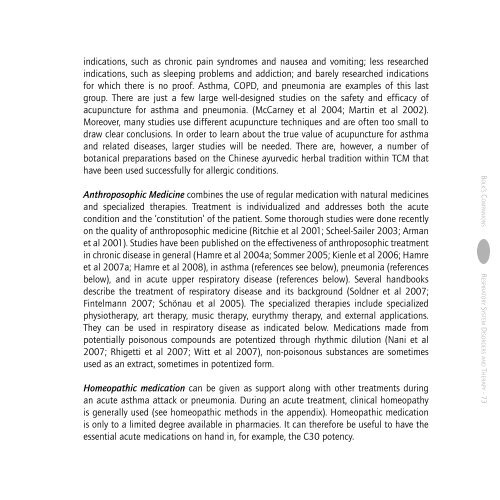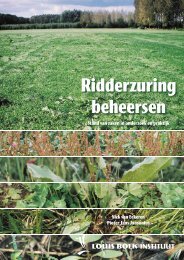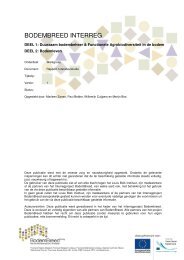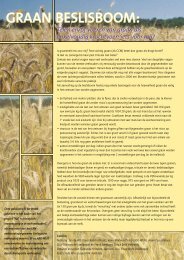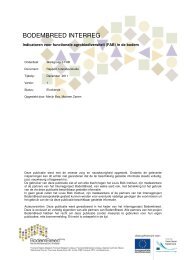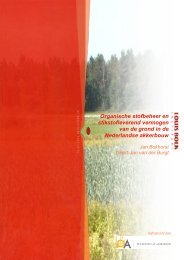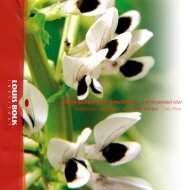Respiratory System Disorders and Therapy From a New - Louis Bolk ...
Respiratory System Disorders and Therapy From a New - Louis Bolk ...
Respiratory System Disorders and Therapy From a New - Louis Bolk ...
Create successful ePaper yourself
Turn your PDF publications into a flip-book with our unique Google optimized e-Paper software.
indications, such as chronic pain syndromes <strong>and</strong> nausea <strong>and</strong> vomiting; less researched<br />
indications, such as sleeping problems <strong>and</strong> addiction; <strong>and</strong> barely researched indications<br />
for which there is no proof. Asthma, COPD, <strong>and</strong> pneumonia are examples of this last<br />
group. There are just a few large well-designed studies on the safety <strong>and</strong> efficacy of<br />
acupuncture for asthma <strong>and</strong> pneumonia. (McCarney et al 2004; Martin et al 2002).<br />
Moreover, many studies use different acupuncture techniques <strong>and</strong> are often too small to<br />
draw clear conclusions. In order to learn about the true value of acupuncture for asthma<br />
<strong>and</strong> related diseases, larger studies will be needed. There are, however, a number of<br />
botanical preparations based on the Chinese ayurvedic herbal tradition within TCM that<br />
have been used successfully for allergic conditions.<br />
Anthroposophic Medicine combines the use of regular medication with natural medicines<br />
<strong>and</strong> specialized therapies. Treatment is individualized <strong>and</strong> addresses both the acute<br />
condition <strong>and</strong> the ‘constitution’ of the patient. Some thorough studies were done recently<br />
on the quality of anthroposophic medicine (Ritchie et al 2001; Scheel-Sailer 2003; Arman<br />
et al 2001). Studies have been published on the effectiveness of anthroposophic treatment<br />
in chronic disease in general (Hamre et al 2004a; Sommer 2005; Kienle et al 2006; Hamre<br />
et al 2007a; Hamre et al 2008), in asthma (references see below), pneumonia (references<br />
below), <strong>and</strong> in acute upper respiratory disease (references below). Several h<strong>and</strong>books<br />
describe the treatment of respiratory disease <strong>and</strong> its background (Soldner et al 2007;<br />
Fintelmann 2007; Schönau et al 2005). The specialized therapies include specialized<br />
physiotherapy, art therapy, music therapy, eurythmy therapy, <strong>and</strong> external applications.<br />
They can be used in respiratory disease as indicated below. Medications made from<br />
potentially poisonous compounds are potentized through rhythmic dilution (Nani et al<br />
2007; Rhigetti et al 2007; Witt et al 2007), non-poisonous substances are sometimes<br />
used as an extract, sometimes in potentized form.<br />
Homeopathic medication can be given as support along with other treatments during<br />
an acute asthma attack or pneumonia. During an acute treatment, clinical homeopathy<br />
is generally used (see homeopathic methods in the appendix). Homeopathic medication<br />
is only to a limited degree available in pharmacies. It can therefore be useful to have the<br />
essential acute medications on h<strong>and</strong> in, for example, the C30 potency.<br />
<strong>Bolk</strong>’s Companions RespiRatoRy system DisoRDeRs anD theRapy - 73


